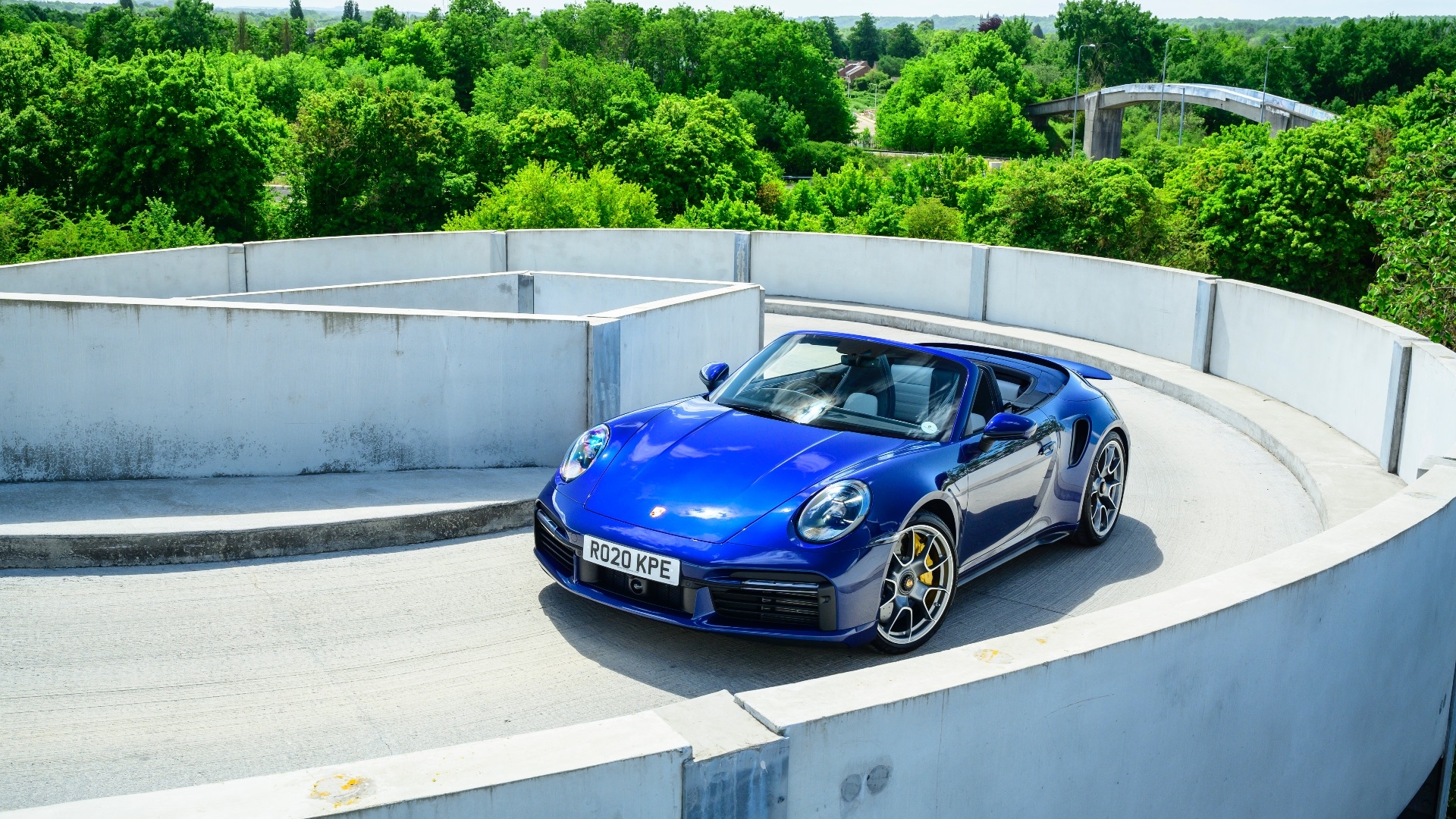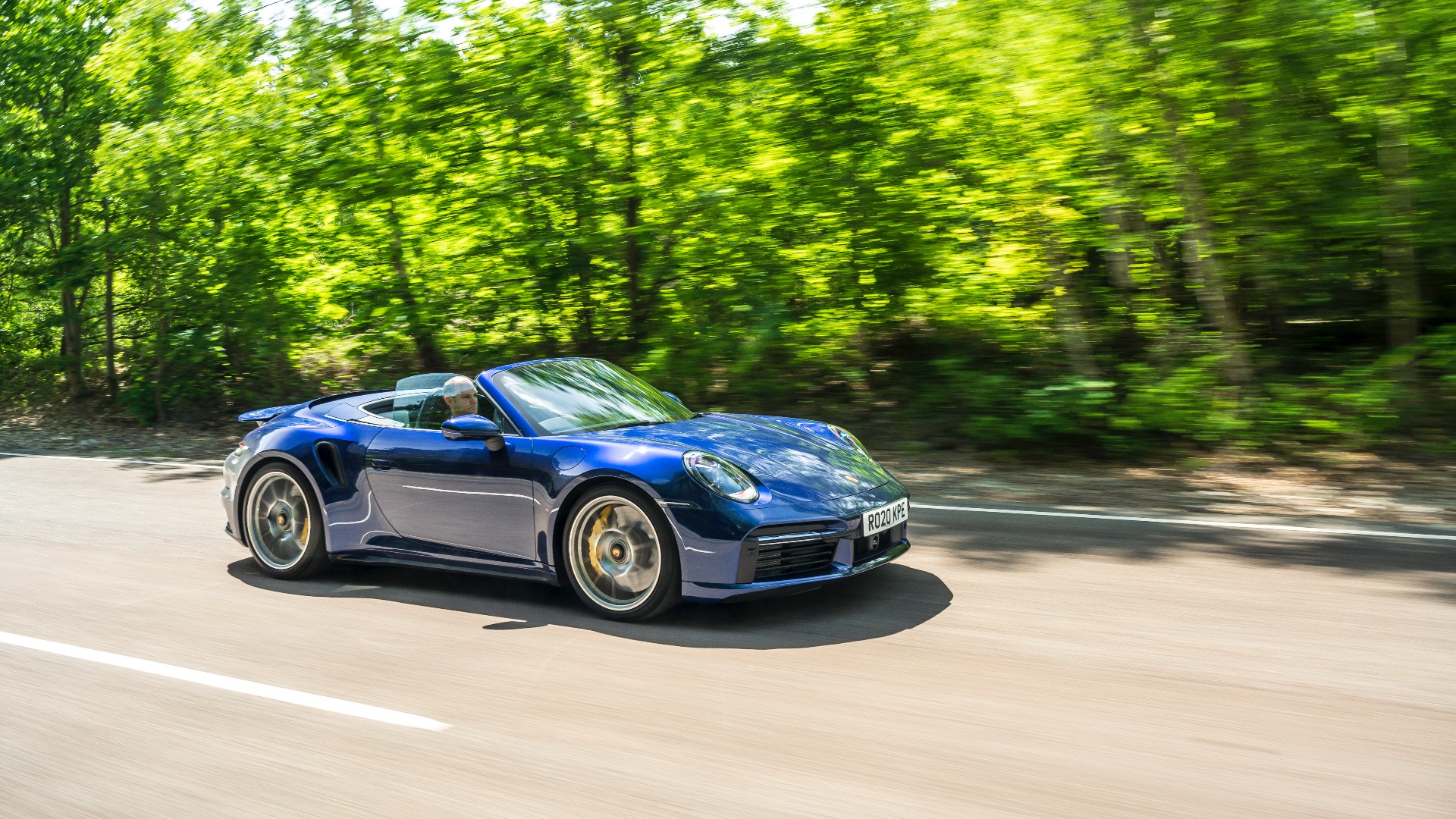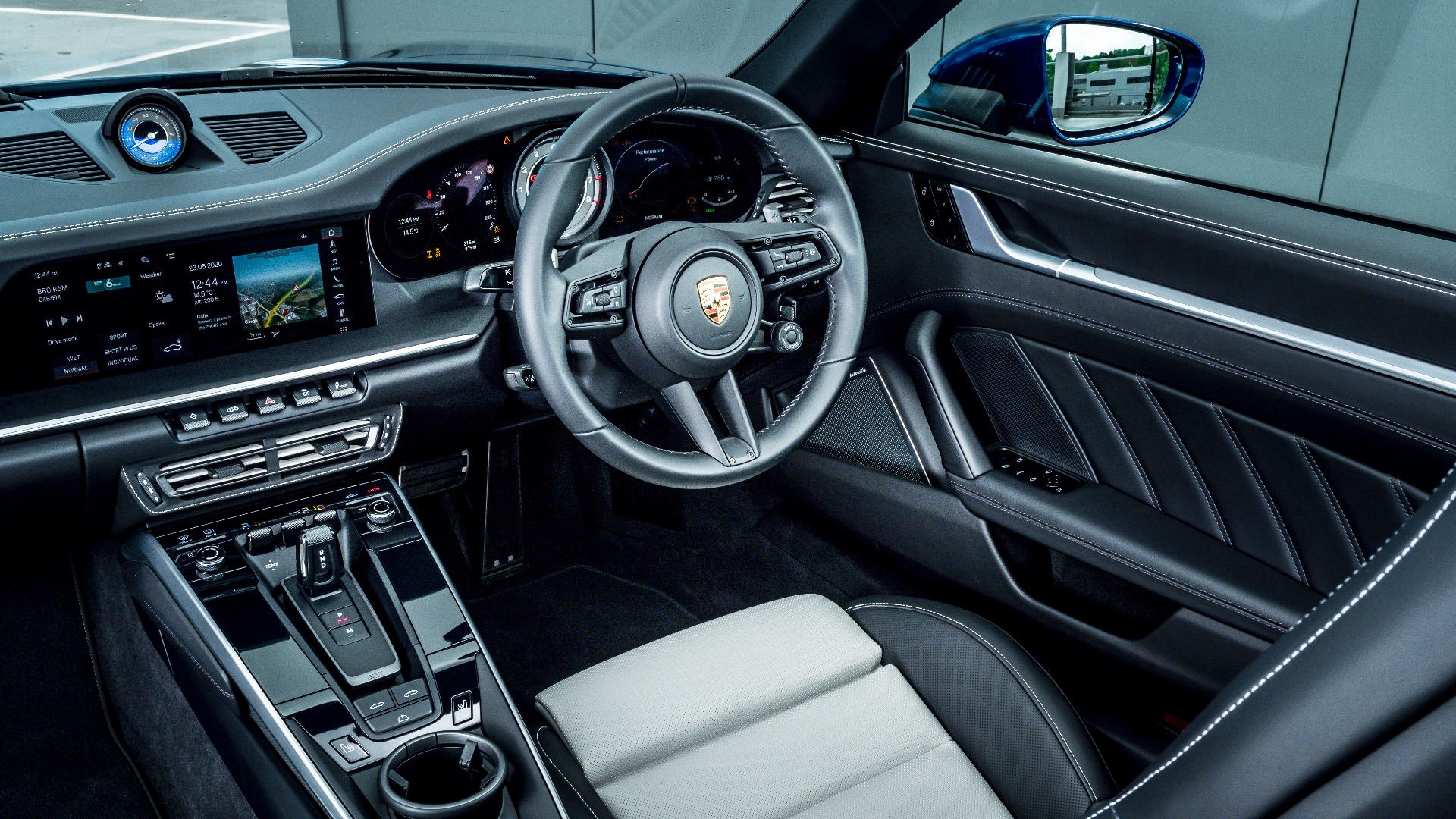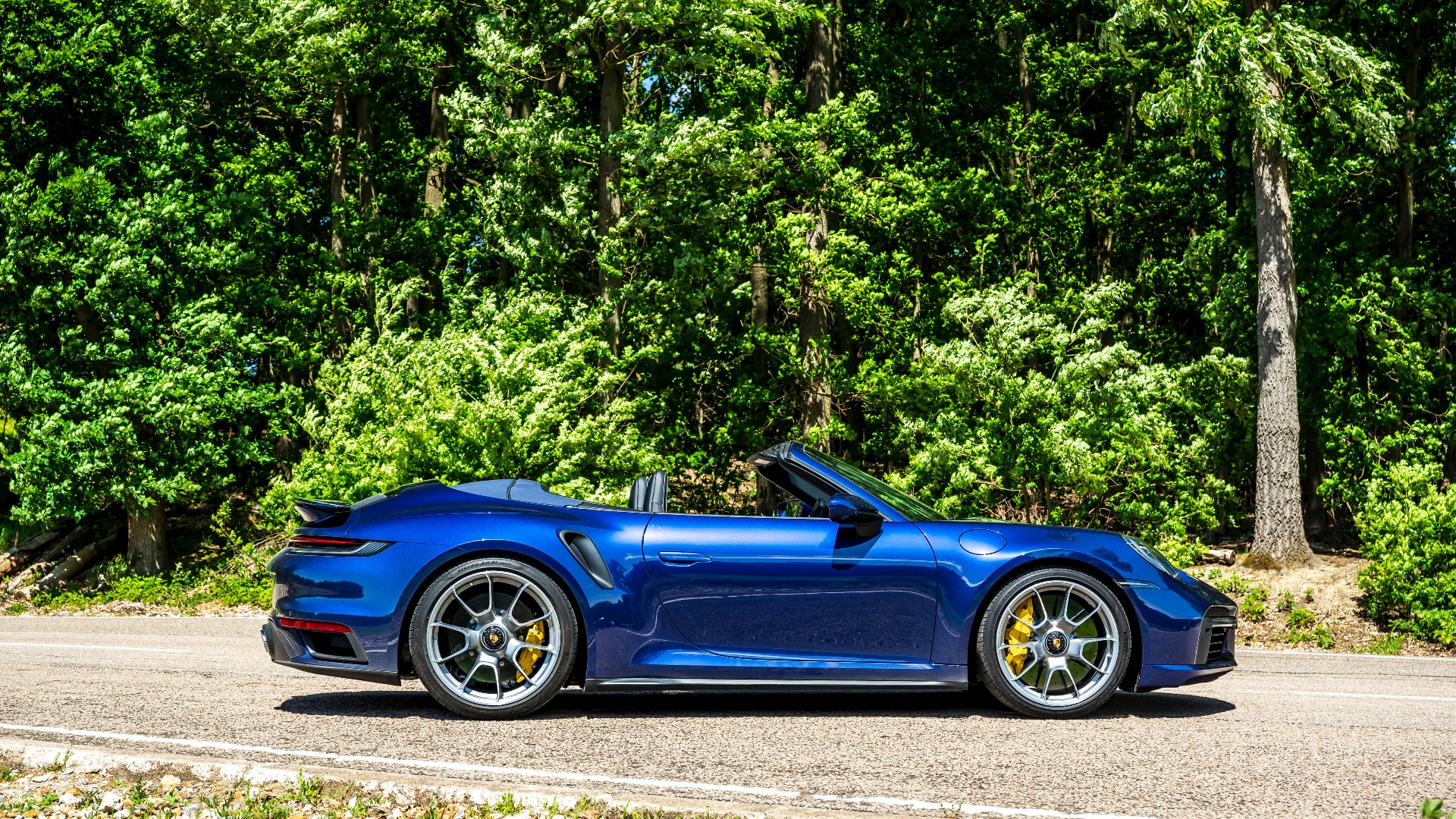
King’s Road, Chelsea: a Wednesday evening in 1985. Sebastian (let’s call him Sebastian) is braying loudly into a brick-sized Motorola phone. He takes off his Ray-Bans, dusts off his shoulder pads and enters a bistro.
Nouvelle cuisine is on the menu and Spandau Ballet is on the stereo. A man joins him at the bar. Filofaxes are checked, business cards are exchanged and deals are done. Seb leaves, climbs into his red Porsche 911 Turbo and blasts into the night.
The 911 Turbo has always been the quintessential ‘city’ supercar. Yet like Seb – who, after a brief stint in rehab, retired quietly to Provence – it has matured with age. The air-cooled 930 original was a heady cocktail of all-or-nothing boost and dicey on-the-limit handling. Nicknamed the Widowmaker, it was riskier than buying shares in Polly Peck.
Six generations later, those vices have been firmly ironed-out. But don’t think for a moment the Turbo has gone soft.

This ‘992’ Turbo S has more than twice the power of the 930, for starters. And it’s ferociously fast. A 650hp 3.7-litre flat-six and eight-speed twin-clutch PDK gearbox deliver 0-62mph in 2.8 seconds: quick enough to worry some seven-figure hypercars. Peak torque is 590lb ft at 2,500rpm and top speed is 205mph.
The other big number is the price: £155,970, or £165,127 for the Turbo S Cabriolet driven here. So it’s still a car for high rollers on big bonuses.
In place of the original’s trademark whale tail, the new Turbo features a pop-up wing that also acts as an airbrake. You can’t miss those shapely centre-lock alloys or the hungry air intakes in its swollen haunches, but the Porsche isn’t catnip for car-spotters like a Lamborghini. For me, that’s a huge part of its appeal.
I love how the 911 Cabriolet’s roof follows the classic profile of the coupe, too.

Retracting said roof takes 12 seconds and amplifies the pneumatic gasps and hisses of the twin turbos. It also shows off the 911’s cabin: a brilliant blend of retro (tactile toggle switches, analogue rev counter) and modern (widescreen infotainment, configurable digital dials).
There are even two child-sized rear seats, of course, although most will treat them as somewhere to sling bags.
I was lucky enough to drive a 993 and 997 Turbo S just before lockdown, but this is another level again.
— Tim Pitt (@timpitt100) June 8, 2020
Too fast for the road, obviously, but hugely capable and covetable. pic.twitter.com/P8kEADzk9z
Behind the wheel, the Turbo feels crushingly capable: almost omnipotent. Like Gordon Gekko auditioning for The Apprentice, it’s absurdly overqualified for the job.
The engine serves up elastic acceleration, while four-wheel drive and steamroller tyres mean tenacious traction. The huge PCCB carbon-ceramic disc brakes – larger than the 930’s 15-inch alloys – also merit a mention. They’ve progressive and hugely confidence-inspiring, with tireless stopping power from silly speeds.
Factor in an arsenal of chassis tech, including adaptive air suspension and active aero, and the Turbo feels laser-guided.

Point-to-point, I’m not sure anything is quicker. And no rival offers greater bandwidth either. The Turbo is easygoing enough to drive every day and comfortable enough to cross Europe in a single bound.
Yet it’s also a richly rewarding sports car, with nuanced steering, unflappable body control and malleable, rear-biased balance. Porsche’s purist GT division lent a hand with chassis development – and it shows. Where the outgoing 991 Turbo felt slightly sterile, the 992 is exuberant and engaging.
Ultimately, the flagship 911 is nigh-on twice the price of a Carrera, and opportunities to use its prodigious extra performance are few and far-between. Also, the upcoming 992 GT3 will likely be even more visceral to drive – particularly on a track.
But perhaps that’s missing the point. The Turbo has been about having more, being the best and epitomising excess. Mission accomplished, then. I think Sebastian would approve.
PRICE: £165,127
0-62MPH: 2.8sec
TOP SPEED: 205mph
CO2 G/KM: 257
MPG COMBINED: 25.0
[…] The Taycan range follows a familiar hierarchy, starting with 4S (£83,367), then Turbo (£115,858) and Turbo S (£138,826). Pedants will note that, being electric cars, there’s no actual ‘turbo’ in sight – but frankly Porsche muddied these waters long ago with the turbocharged 911 Carrera and 911 Turbo. […]